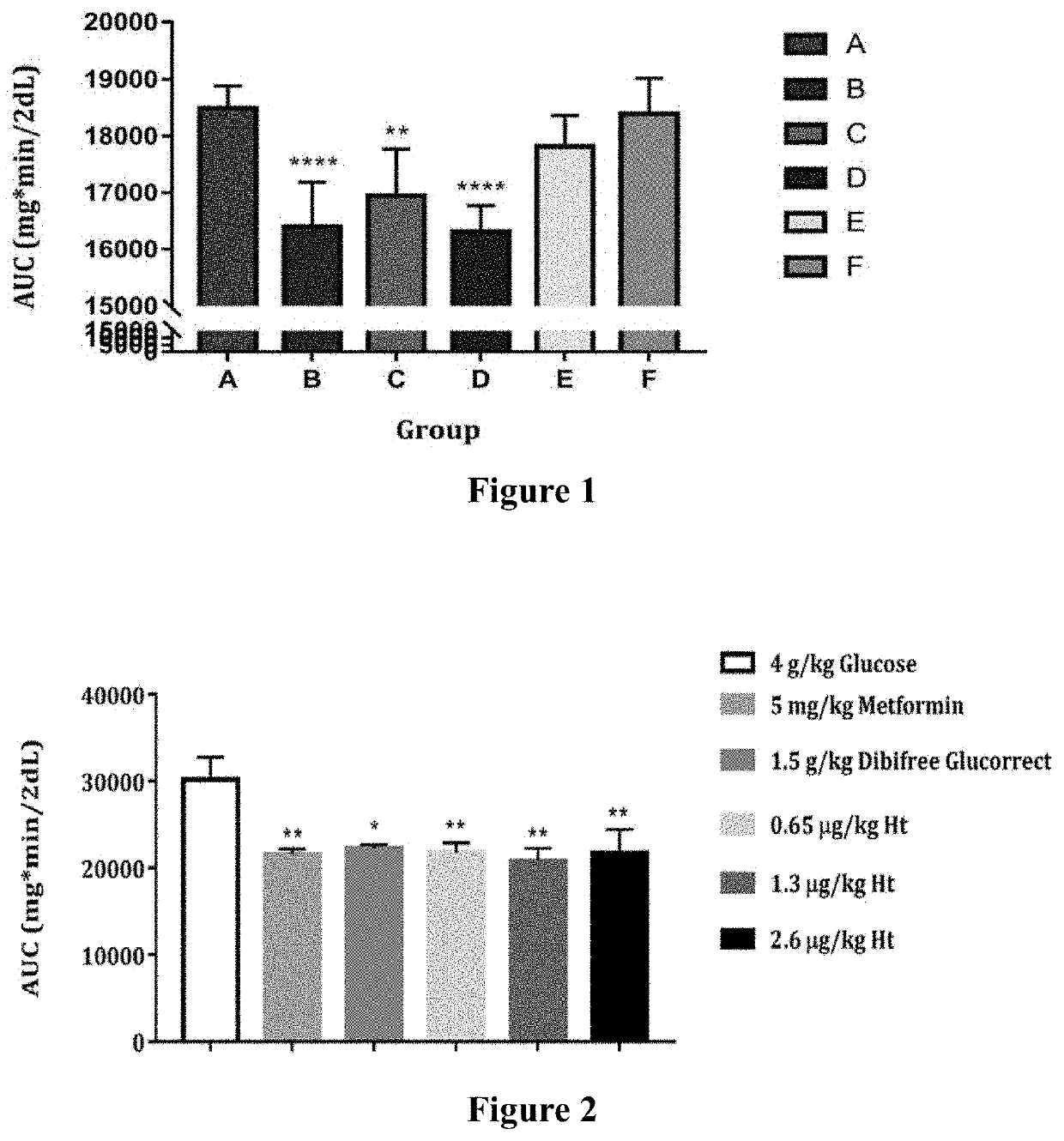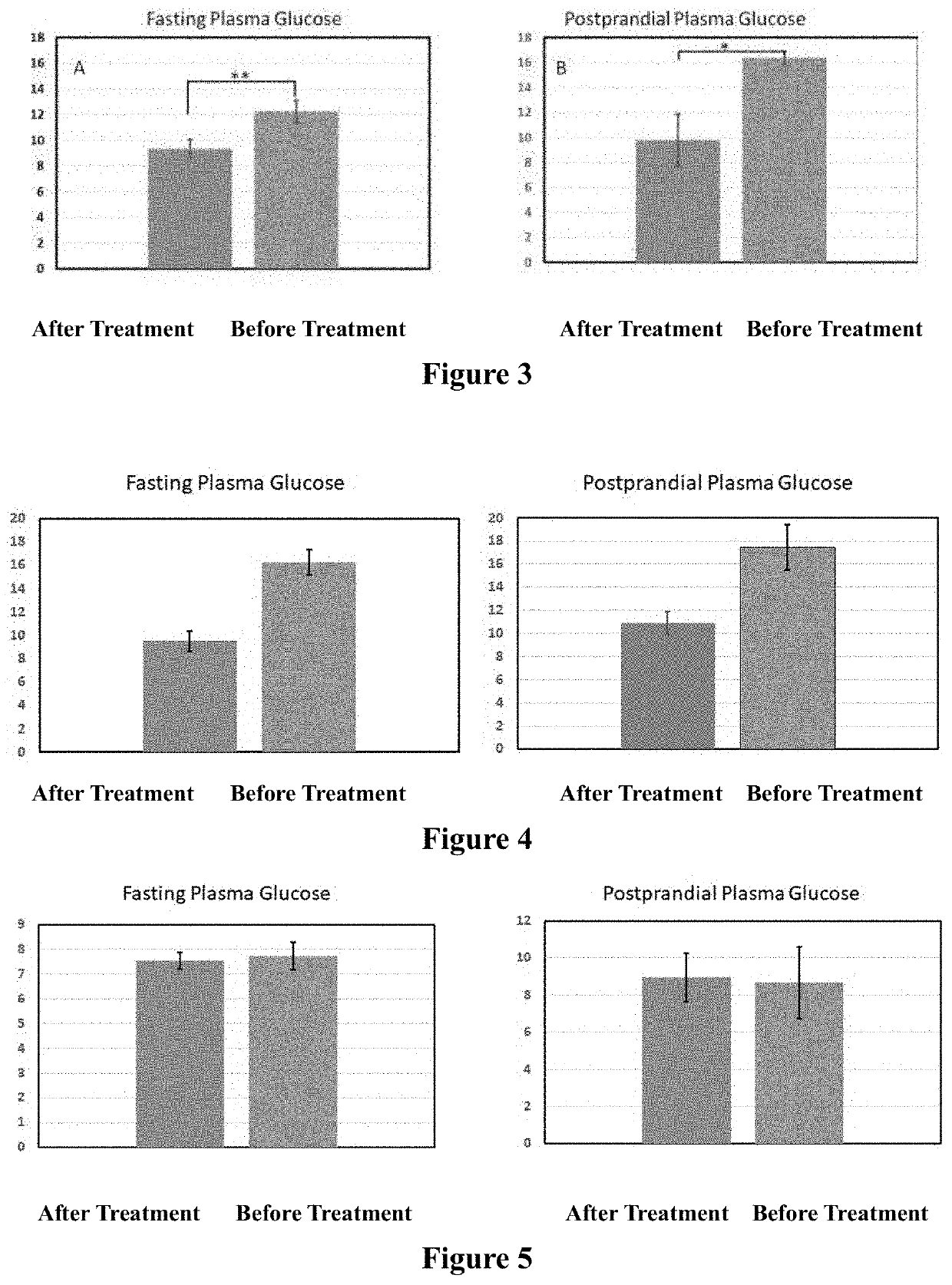Method and composition for treatment of hyperglycemia
- Summary
- Abstract
- Description
- Claims
- Application Information
AI Technical Summary
Benefits of technology
Problems solved by technology
Method used
Image
Examples
example 1
Animal Experiments
[0035]6-week-old male ICR mice were obtained from National Laboratory Animal Center (Taipei, Taiwan) and were kept in controlled environmental conditions at room temperature (22±2° C.) and humidity (55±10%). The 12 h light / dark (0600-1800) cycle was maintained throughout the experiments. The animals had free access to the standard chow (PMI LabDiet 5001; 13.2% fat, 24.7% protein, and 62.1% carbohydrates as a source of calories) and sterilized water ad libitum. Animal experimental protocols were followed as per the “Guide for the Care and Use of Laboratory Animals” of National Dong-Hwa University approved by the National Dong-Hwa University Animal Ethics Committee. In the test period, animals were oral gavage administered with all the test articles each day at 5 PM and OGTT were performed by the end of each week for three weeks. Six mice per group were used for the in vivo studies. The in vivo studies were performed at least twice. The experiment animals (mice) were...
example 2 clinical observation
[0041]A clinical observation for three diabetic patients was conducted and the levels of glycated hemoglobin (also knowns as HbA1c) for each patient were recorded. HbA1c is a form of hemoglobin (Hb) that is chemically linked to a sugar, and indicates the presence of excessive sugar in the bloodstream, often indicative of diabetes as it is easy to detect.
[0042]Case 1
[0043]A 69-year-old male who was diagnosed with diabetes for six years, was treated with an oral anti-diabetic medicine without insulin for four years. Then, he was treated with the composition containing SE according to the invention (the SE treatment) as a replacement for an oral anti-diabetic medicine. The levels of plasma glucose were measured before breakfast (fasting plasma glucose level) and 2 hours after dinner (postprandial plasma glucose) and recorded. The averages of plasma glucose of the last 9 day from the patient without treatment of the anti-diabetic medicines (the negative control) and those of the last 9 ...
PUM
| Property | Measurement | Unit |
|---|---|---|
| Electrical resistance | aaaaa | aaaaa |
Abstract
Description
Claims
Application Information
 Login to View More
Login to View More - R&D
- Intellectual Property
- Life Sciences
- Materials
- Tech Scout
- Unparalleled Data Quality
- Higher Quality Content
- 60% Fewer Hallucinations
Browse by: Latest US Patents, China's latest patents, Technical Efficacy Thesaurus, Application Domain, Technology Topic, Popular Technical Reports.
© 2025 PatSnap. All rights reserved.Legal|Privacy policy|Modern Slavery Act Transparency Statement|Sitemap|About US| Contact US: help@patsnap.com


